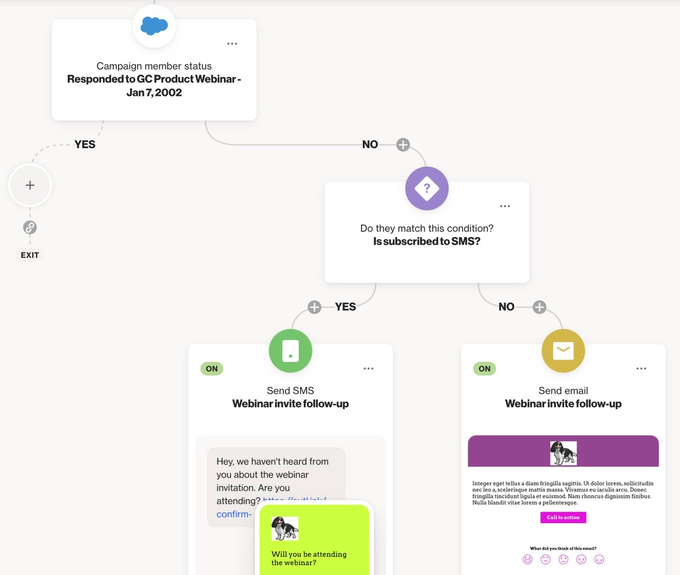Journey conditions
Overview
Ortto Journeys allow users to split pathways based on contacts meeting different conditions. Journey pathways can be split with a true/false, multi-path or time condition.
Accessing Journey conditions
To access Journey conditions, go to Marketing > Campaigns > Select your Journey > Edit > + > Condition.
Managing Journey conditions
True/false condition
A True/false condition lets you guide contacts along different paths in the Journey based on specific actions or attributes.

EX: You can check if someone has Email permission as true.
You can set criteria to match activities that have (or haven’t) occurred.
EX: You might want to know if a contact has completed a specific activity since joining the journey.
- Imagine your organization offers educational courses. In a Journey for new students, you could use a custom activity, like Completed course or Submitted assignment, to tailor messages such as Tips for your first assignment or You’re off to a great start!
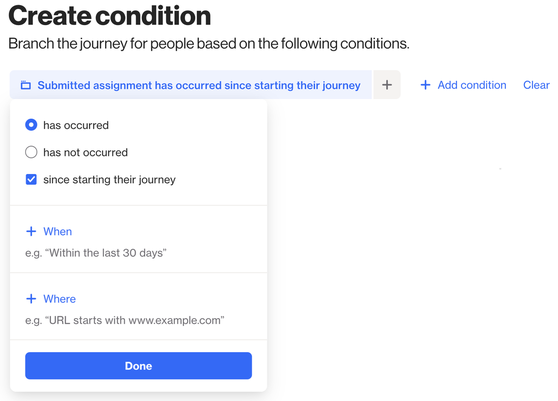
NOTE: When using a where clause in journey conditions, only data from the last 90 days is considered, even if data retention is enabled for that activity.
Learn more about Matching activity attributes in condition shapes.
Multi-path condition
The Multi-path condition lets you guide contacts through multiple exit paths based on specific attributes or activities, going beyond just Yes or No options.
EX: You can use this condition to send location-specific information based on a person’s country. You can also combine conditions to evaluate multiple factors, like the country and their last order date.
IMPORTANT: Conditions are checked from left to right, so once a contact meets a condition, they’ll follow that path, even if they qualify for others later on.
As an example, here’s how to set up a multi-path condition for different countries.
- In the Journey path editor, click Add (+) > Condition > Multi-path condition.
- Click Add path. For Path 1, select Person > Country is United States.
- For Path 2, click Add path again and choose Person > Country is Canada.
- Path 3 will automatically catch contacts who don’t match Path 1 or 2 (those from other countries).
- Click Save changes to finish.
This setup allows you to tailor your messaging based on where your contacts are located.
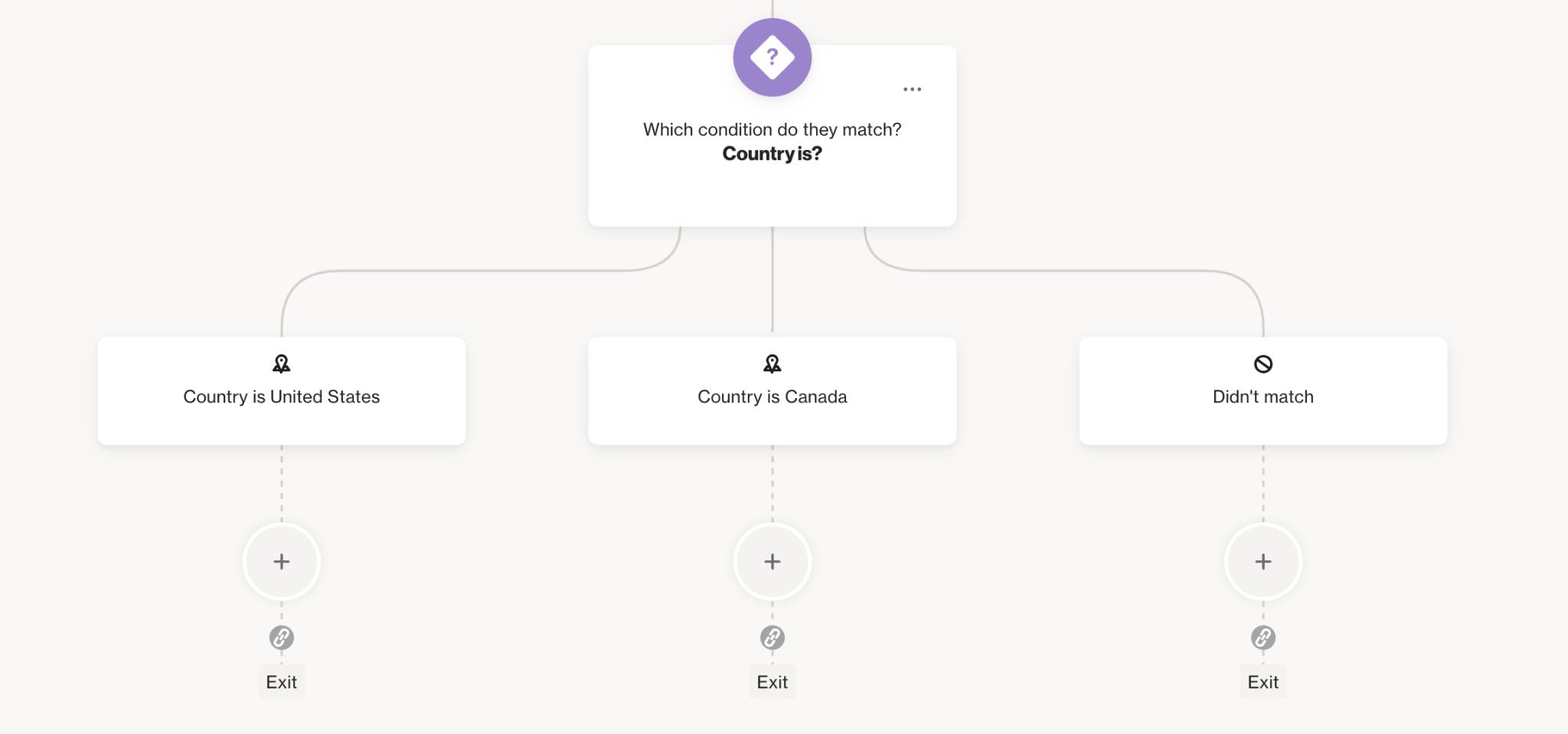
NOTE:
- You can add up to 20 paths in a Multi-path condition.
- To delete a path, you must first remove any shapes (like messages or actions) connected to it.
- The Multi-path condition shape itself counts as only 1 shape, regardless of the number of paths you create. Any shapes that follow along those paths will count toward your total shape limit as usual.
Time condition
The Time condition allows you to segment contacts based on their arrival time, using either precise or relative timing:
- Precise time: This is useful for events (like a conference or holiday) where you want to hold contacts until the event occurs. For example, if someone arrives before Christmas, they will go down the NO path, while those who arrive after will proceed down the YES path.
- Relative time: You can set specific days and timeframes. For instance, you might route contacts based on whether they arrive during office hours. Those arriving during office hours will go down the YES path, while those outside those hours will follow the NO path.
For both conditions, you can adjust settings to the person’s local timezone, if known.

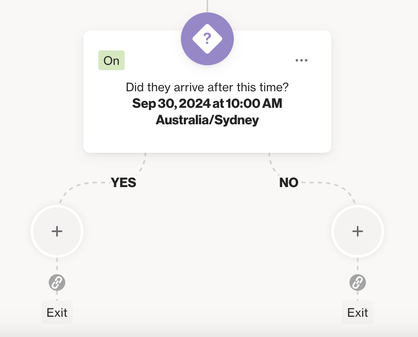
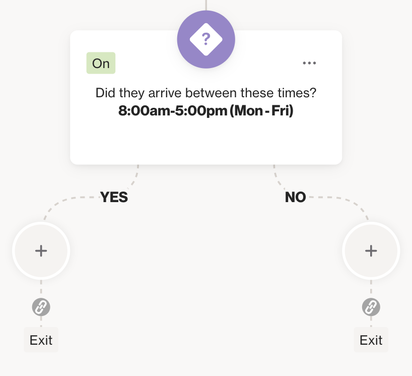
Salesforce condition
The Campaign member status condition lets you segment contacts in the Journey based on their Salesforce campaign status: Planned, Received, Responded, or Sent.
NOTE: The only required field is Campaign, while the Status field is optional. If no status is selected, the system will simply check whether a person is an active member of the campaign, regardless of status.
Alternatively, you can use a merge tag value to create splits based on custom attributes that match these Salesforce statuses.
NOTE: If you use a merge tag, the value must match one of the Salesforce campaign member status options (Planned, Received, Responded, or Sent). Otherwise, the condition may not function correctly.
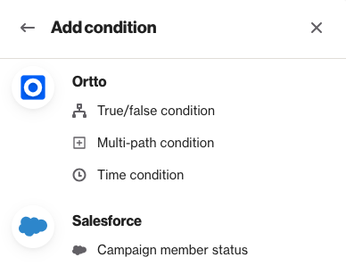
When following up with campaign invitees who haven’t responded, you can use the member status condition alongside a true/false (activity) condition. This lets you check if the person is subscribed to SMS, so you can send them either an SMS or an email based on their preference.
